This article is from ECHO Asia Note # 40.
[Editor’s Note: In the event that you were unable to join us for this year’s ECHO Asia Conference, we have summarized and made available some of the materials presented. Highlighted below are some of the presentations and materials that received significant positive feedback from our participants, followed by links to all additional talks and resources shared during the week.]
This year’s 7th Biennial ECHO Asia Agriculture & Community Development Conference took place in Chiang Mai, Thailand 1 - 4 October, 2019. This four-day event was full of practical information relating to sustainable agriculture and community development in the region. We are thankful for the many practitioners (from 28 countries) who gathered to present their expertise, share ideas, swap seeds, and enrich each other through networking! Let us share with you some highlight workshops from this year’s conference. Resources on our ECHOcommunity.org website are hyperlinked throughout this article, so please let this article serve not only as a window into this year’s conference, but also as a gateway to more practical information.
Black Soldier Fly (BSF) Larvae Production
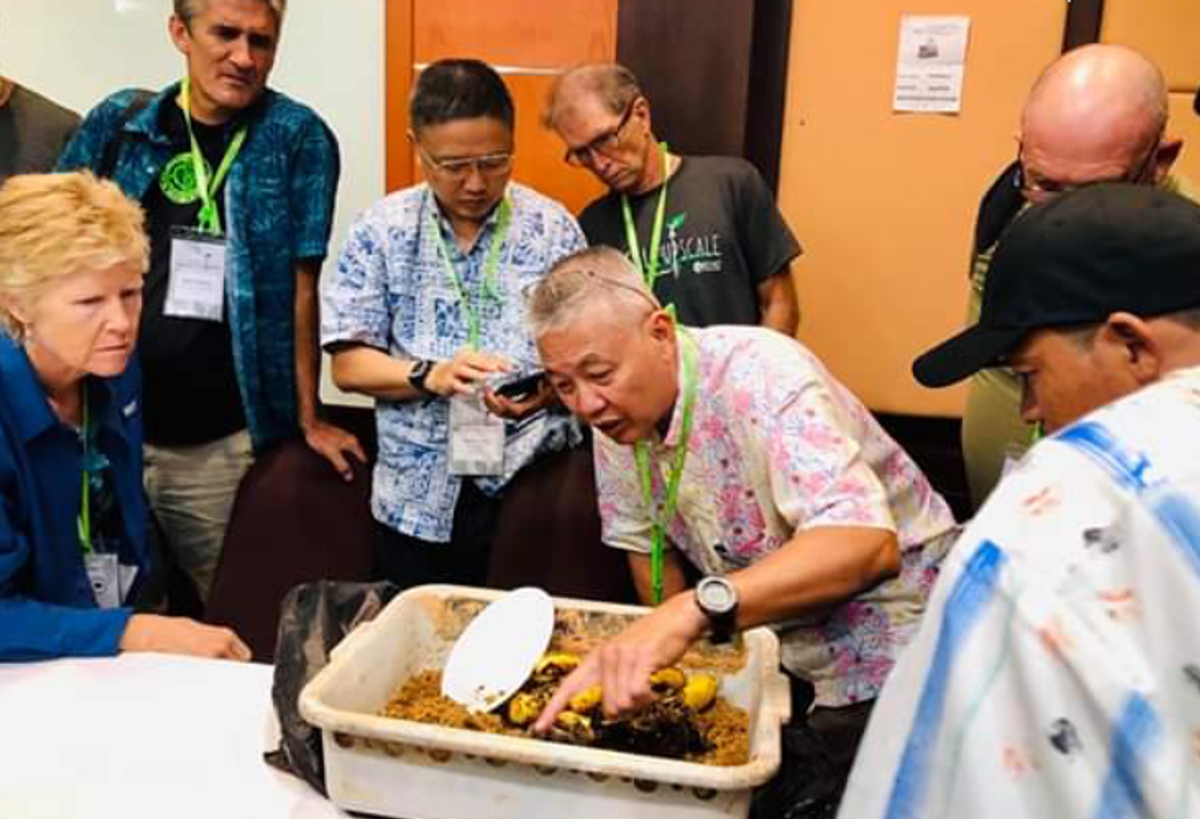
Wong Kim Hooi (Anthony) of Frangipani Hotel & Resort taught a workshop titled “Black Soldier Fly Larvae for Chicken Feed.” He shared that recycling food waste is still fairly limited, while 40% - 60% of landfill content is food waste. Black soldier fly larvae can be used as a viable, high lipid biomass feed-stock, produced using organic matter (animal manure, restaurant waste, and fermented straw). The larvae have received attention for their ability to quickly compost materials such as meat and carrion that vermicompost systems avoid. This larvae bioconverts the manure’s nutrients into a 42% protein and 35% fat feedstuff and can be fed right back to livestock, fowl, or fish. Larvae can also be ground and fed into vermicomposting or used to pre-digest high cellulose material to then be broken down by worms. Benefits of BSF production include reducing waste from food scraps as well as excess farm animal manure. Adding larvae to animal feeds can also cut a small-scale farmer’s costs by reducing the amount of commercial feed they need to buy. Participants were shown how to construct a simple, self-harvesting BSF larvae production system using styrofoam coolers.
Natural Farming
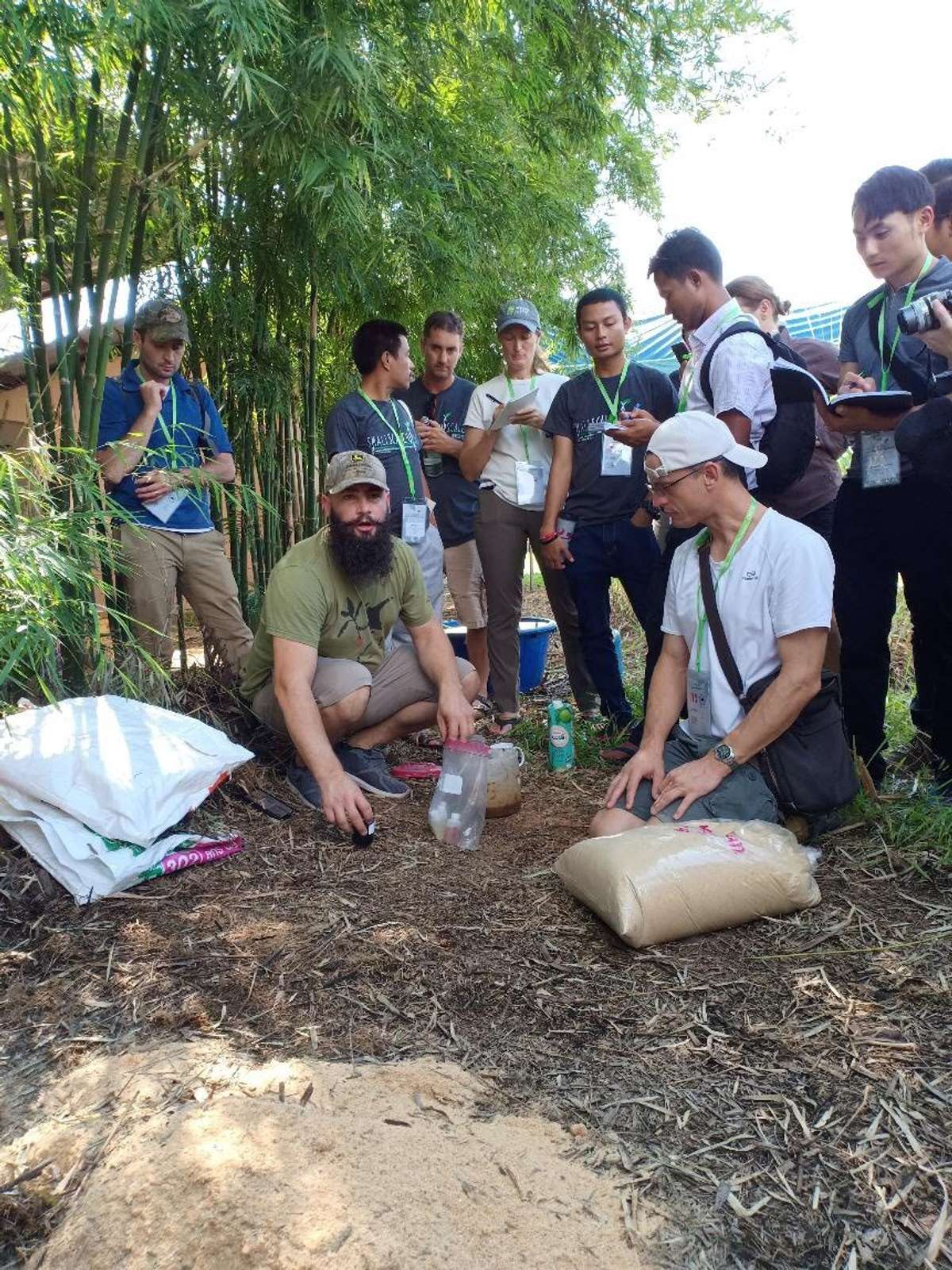
Chris Trump, Soil Specialist with Natural Farming, Co., taught a workshop titled ‘Upscaled Natural Farming.’ He told the story of how his family farm in Hawaii transitioned from conventional, chemical farming to organic farming. The Trump family farm is 800 acres of certified organic macadamia nut orchard and is farmed using exclusively Natural Farming methods and compost for their nutrient needs.
During the presentation, the group also discussed the implications of God’s design as a commercial farmer. Chris spoke on large scale techniques for tending to the microbial life of the soil. The workshop also explored cost/benefit implications to focusing on the life of the soil. These soil-building techniques include making Indigenous Microorganism (IMO) solutions by collecting local fungal mycelia from soil at the base of bamboo clumps or other carbon-rich plants. This and other solutions are then used as foliar sprays and soil drenches to encourage the soil microbial population in a farming system. Chris and his family have been more profitable with Natural Farming techniques in the last 3 years (they have been using them for 9 years now) than in the last 28 years combined. Over 40 conference participants attended and got an up-close, practical look at natural farming techniques. They also engaged in discussion with an extended Q&A time to explore a revolution sweeping the agricultural world.
Sloping Agriculture Land Technology (S.A.L.T.)
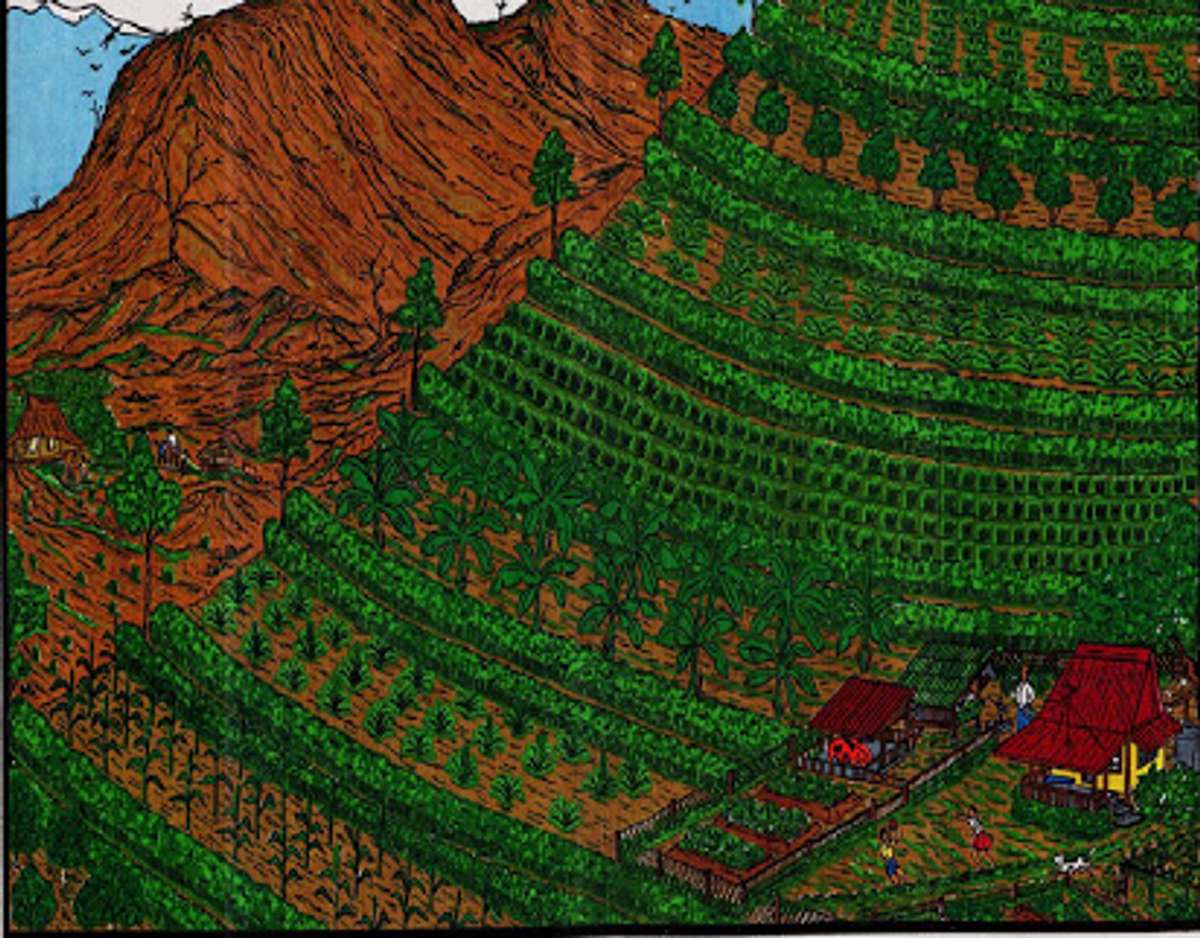
Jethro Adang, Director of the Mindanao Baptist Rural Life Center, taught on Sloping Agricultural Land Technology (S.A.L.T.). This diversified farming system involves planting perennial hedgerows along the contour lines of a hillside to combat soil erosion with a succession of perennial and annual crop production in between hedgerows. The title of his presentation was “Two Versions of SALT Technology, 1. Sloping Agriculture Land Technology - 2. Simple Agro-livestock Technology.” This session gave participants an understanding of the current need for SALT technology for erosion control, soil moisture retention, environmental and soil fertility restoration, and increasing production in highland agricultural areas. This technology also saves labor and increases income for the small-scale farmer. Jethro shared ten steps in making and maintaining a S.A.L.T. farming system, including how to build a simple A-frame to measure contour lines and selecting what leguminous forage perennials to use as hedgerows. Most of the time, crop production and animal backyard raising are integrated in order to meet the economic needs of rural farmers. Fittingly, this system can incorporate livestock by establishing animal barns as well as forage gardens based on preference and nutritional needs of the animal. Considerations like livestock management, breeding, and marketing animal products well were also covered. Jethro concluded that the correct technology creates the correct production, and that production helps to uplift the economy of the farmers.
Making On-Farm Feeds for Livestock
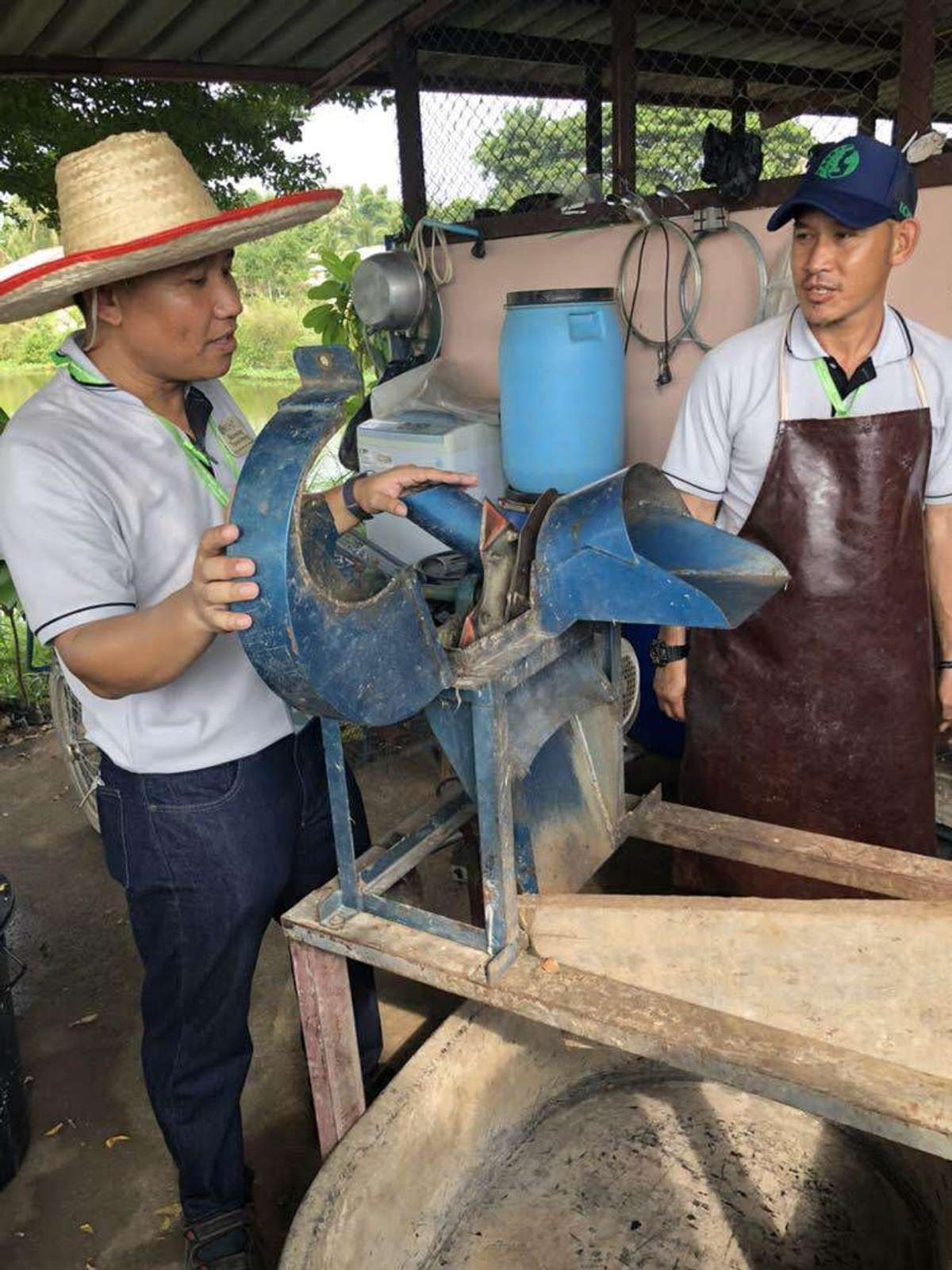
Two conference workshops offered practical information and training on making cost-effective livestock feeds using farm-available materials.
Boonsong Thansritong, Agriculture Operation Manager at the ECHO Asia Impact Center, taught a workshop titled, “Total Mixed Animal Feed Ration (TMAFR): Pig and Poultry.” This workshop was given in English with Thai translation. Animal feed represents 70% of the costs involved in modern animal production. This creates a significant problem for small-scale farmers as it allows for very little profit margin. This workshop explored methods to reduce this expense by using feed ingredients easily grown on a small farm, such as banana stalks. Participants learned the importance TMAFR, its key ingredients, and how to use it for pig and chicken feed. Participants were also shown results from ECHO Asia’s recent research on Farm-Generated Pig Feed that compared weight gain in pigs raised on commercial feed vs. an on-farm feed made weekly with a base of fermented banana stalks and additives such as rice bran, corn meal, fish meal, and soy meal. On-farm feeds were found to be more labor-intensive, but a financially feasible option for farmers, especially for those in remote places where commercial feeds costs are more expensive or challenging to source. The experiment showed that bringing a pig to market weight using on-farm feeds can contend economically with doing so using commercial feed, and can be made more adoptable with added farm-available resources. Conference workshop participants worked together to produce TMAFR, using the ECHO farm pigs and hens as a case study to demonstrate the benefits of this feed.
Keith Mikkelson, Director of Aloha House, taught a workshop on economical livestock feed options. He is the author of ECHO’s newest publication, “Animal Integration & Feeding Strategies for the Tropical Smallholder Farm.” This book was born out of a compilation of past ECHO Asia Note articles discussing on-farm feed solutions for his farm in Palawan, Philippines. ECHO Asia Notes featured his articles on Farm-Generated Chicken Feed, Feed Options for Ruminants in the Tropics, Hog Feed Production, and Fish Feed Production. This resource is also highlighted in ECHO Asia Note #39.
Seeds
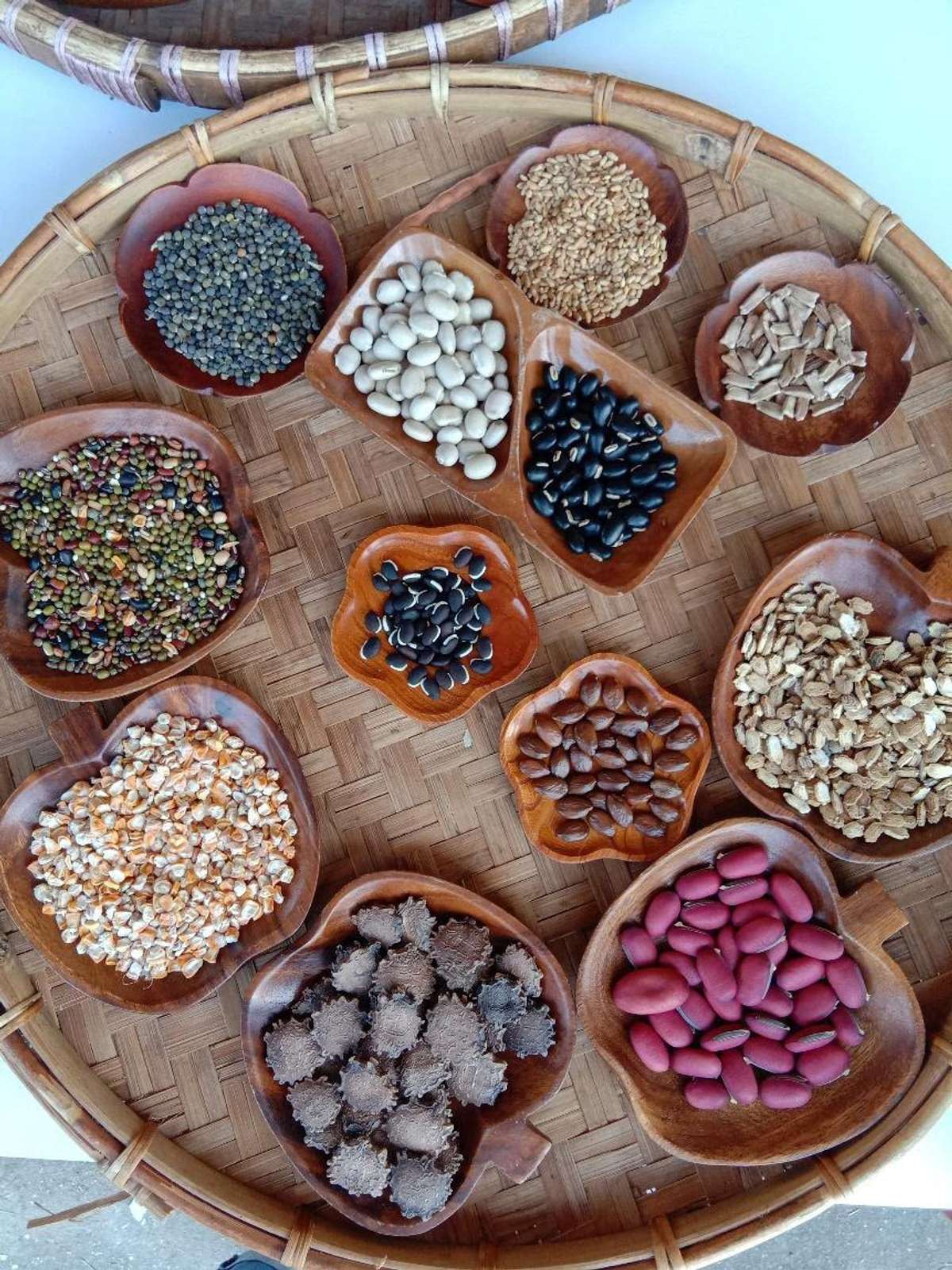
This year’s conference also offered a variety of workshops from ECHO staff and partners from Global Seed Savers in the Philippines. These sessions focused on different aspects of seeds, including seed storage techniques and seed banking strategies.
ECHO Asia’s Seed Bank Manager, ‘Wah’, offered a workshop titled ‘Seed Cleaning,’ which took place on the ECHO Asia Farm during one of the afternoon workshops. She demonstrated that seed saving is still an important practice for small-scale farmers. Each crop is unique, and therefore each seed needs to be cleaned in a different way. In this workshop, Wah shared her years of experience cleaning and saving seed of neglected and underutilized edible crop varieties that are important to SE Asia. She covered seed cleaning methods such as fermentation, massage, hitting, sand treatment, screen cleaning, and blending.
ECHO Asia Seedbank staff member, ‘Paw’, taught on ‘Seed Viability Testing’. Viable seed is crucial to the success of small-scale farmers, and can save a farmer significant costs up front. So, where seeds are cleaned and saved, it’s important to ensure the germination quality of those seeds. Paw demonstrated techniques to evaluate seed viability through germination testing methods. Each seed has unique biological characteristics, and therefore needs a unique method of germination testing. The workshop surveyed many useful seed viability testing techniques such as using soil, petri dishes, sand, cotton, and bamboo. Participants were also invited to gain hands-on experience setting up a paper towel germination test in which seeds are sanitized, wrapped in a moist paper towel, and stored in a plastic bag.
ECHO Global Seedbank Manager, Holly Sobetski, offered a workshop titled, ‘Teaching Seed Saving to Diverse Audiences.’ This workshop looked into how to best teach and equip various audiences, for example rural farmers, development workers, seasoned professors- or all three at the same time! Holly shared about the importance of trainers taking on a learner’s attitude about people they equip as well as the training process itself. This was a time of learning and sharing tips on how to best embrace the diversity a trainer finds not only in seeds, but in the people they train. Content on the basics of seed saving and banking was outlined in order to give participants a starting point to plan and adapt training objectives and activities.
Harry Paulino and Karen Lee Hizola of Global Seed Savers Philippines presented a workshop related to establishing seed libraries. Seed libraries were defined in comparison to other seed-saving operations such as seed banks and gene banks. These libraries offer a community a unique way to engage seed-saving and save important genetic material that contributes to local food security. Participants were shown practical steps and considerations in thinking through plans to establish a seed library that is locally-adapted to suit a community’s needs.
For all additional resources from the 2019 ECHO Asia Agriculture & Community Development conference, see the hyperlinked presentations summarized below.
Please take note that this event takes place every two years, with plans for the next ECHO Asia Agriculture & Community Development Conference to happen in October of 2021. Between now and then, the ECHO Asia team will host periodic regional training events, and regular on-farm trainings at the ECHO Asia Small Farm Resource Center in Chiang Mai, Thailand. If you are signed up for ECHO Asia Notes, you will receive announcements for these training events, and we encourage you to pass on any updates to those that could benefit from these gatherings.
